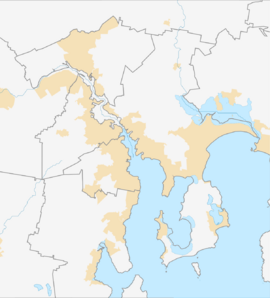Howden, Tasmania facts for kids
Quick facts for kids HowdenTasmania |
|||||||||||||||
|---|---|---|---|---|---|---|---|---|---|---|---|---|---|---|---|
| Population | 717 (2021 census) | ||||||||||||||
| Postcode(s) | 7054 | ||||||||||||||
| Time zone | AEST (UTC+10) | ||||||||||||||
| • Summer (DST) | AEDT (UTC+11) | ||||||||||||||
| Location | 21 km (13 mi) S of Hobart | ||||||||||||||
| LGA(s) | Kingborough | ||||||||||||||
| State electorate(s) | Franklin | ||||||||||||||
| Federal Division(s) | Franklin | ||||||||||||||
|
|||||||||||||||
Howden is a small, quiet community in Tasmania, Australia. It's a suburb of Hobart, the capital city of Tasmania. Howden is located right on the beautiful North West Bay.
This peaceful area is about 21 kilometers (13 miles) south of Hobart. It sits between the growing town of Kingston and the smaller town of Margate. Howden is also close to natural bushland, making it a great spot for nature lovers.
Contents
Exploring Howden's Location
Howden is very close to the water. You can walk to the shores of Stinkpot Bay and North West Bay in just about five minutes! The area is quite hilly, with houses built to fit the landscape.
The Howden foreshore is a special place. You can reach it at low tide from the end of Wingara Road. This rocky shoreline is home to many different kinds of birds. It also has a lot of interesting sea creatures living in the rock pools.
Life by the Bay
When the tide goes out, you can see many cool things in the rock pools. These include Pacific oysters and Shore crabs. It's like a natural aquarium! The area's hilly landscape gives many homes great views of the bay.
Nature and Wildlife in Howden
Howden is a fantastic place for spotting wildlife, especially birds. Many different bird species live here. You can often see lapwings, seagulls, and even black and white cockatoos. Ducks are also common visitors to the area.
Birds and Conservation Areas
A lot of these birds live in and around the Peter Murrell Conservation Area. This protected area helps keep the natural environment safe for animals and plants. It's a wonderful place for birds to find food and build their nests. The rocky shoreline also attracts many different bird species.


